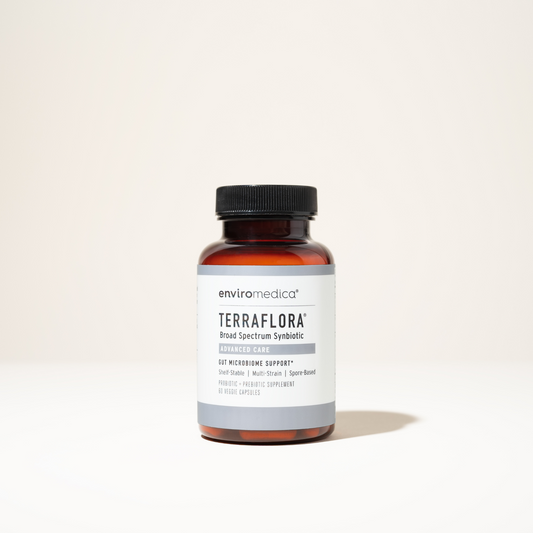What Does Your Poo Say About You?
The topic of bowel movements and bowel habits is one that is not talked about nearly enough. The first time I ask my patients about their bowel habits they act shy and elusive, thinking the answers are gross or embarrassing. The problem is the answers are a bit gross, but even just a simple discussion, let alone an in-depth analysis, can uncover some of the most valuable information about one’s health.
Stools are the end result of how well your digestive tract processes food, from the time you place food into your mouth to the time it makes its way to the toilet. The shape, consistency, color, smell, frequency and even the buoyancy each provide valuable insights about the functionality of the entire digestive tract. And if you don’t already know how critical gut health is, you can read more about that here.
Shape and consistency:
The Bristol stool scale, or chart, provides a standardized methodology
in which to classify the stool form. 7 types exist between type 1 and type 7. Each type of stool form points to
a functional level of the digestive tract. Type 1 and 2 point towards varying levels of constipation, while type
3 and 4 are seen as normal. Type 5 points to the fact that not enough fiber is being ingested. Type 6 and 7 are
seen in the case of an inflamed digestive tract from any number of causes. 1
Color:
Stool color also carries a lot of importance in understanding what your poop is saying
about your health. At times it is just due to the foods you eat, just as how green leafy vegetables can give
feces a green hue. Below should help clear up some questions you may have regarding any unexpected colors that
may show up in a bowel movement. 2
| Color | Health Implications | Diet Causes |
|---|---|---|
| Yellow | Too much fat due to malabsorption disorders. | Potential of gluten protein involvement. |
| Black | Upper gastrointestinal tract bleeding, such as the stomach. | Iron supplements, Kaopectate, Pepto-Bismol, or black licorice. |
| Bright Red | Lower gastrointestinal tract bleeding, likely in the large intestine or rectum (due to hemorrhoids). | Red food coloring, beets, cranberries, or tomato juice/soup. |
| Green | Incomplete bile breakdown due to increased bowel transit time. | Green leafy vegetables, green food colorings, or iron supplements. |
| Light, white or clay | Potential bile obstruction or lack of bile. | Medications such as Kaopectate, Pepto-Bismol or other anti-diarrheals. |
Smell:
While feces shouldn’t smell like roses, there should be a consistent odor; any major
changes or an extremely foul smell should be investigated further. Potential causes include: Celiac disease,
Crohn’s disease, chronic pancreatitis, cystic fibrosis, intestinal infection, microbiome imbalance,
malabsorption, or an abnormally short digestive tract due to surgery or congenital malformation. The reason to
fully ascertain the cause of odor changes is because at times, less ominous causes to change in smell can be
dietary. 3
Frequency:
The timing of bowel movements is significant to monitor as well. It should take
anywhere between 18 and 22 hours for food to move all the way through the digestive tract. Rapid transit and
slow transit are both issues which must be investigated. Some report having a bowel movement every 2-5 days,
which most feel is not a problem, but bowel movements should occur at nearly the same time each and every day.
When a consistent schedule is naturally maintained, the digestive tract is likely working as it should.
Frequency changes are commonly connected to dietary or lifestyle changes. This could include an increase of
fruits, vegetables, or other fiber containing foods, exercise or water. With time, frequency should normalize as
your body adapts to the next diet or lifestyle. 4
Buoyancy:
Stool should sink when it makes it to the toilet, but there are times when it may
float. Floating stools is a common sign of steatorrhea or problems with digestion of dietary fats. Additionally
there may be an increase in gases given off by bacteria in the wrong locations throughout the digestive tract.
5
If any of these problems are present or become chronic with no easily identifiable cause, it is a good idea to do additional due diligence in learning about the potential cause.
As challenges are identified, further in depth testing becomes easy to pursue as it is then abundantly obvious a problem exists. With the knowledge of a potential problem it is important to consider performing a Comprehensive Digestive Stool Analysis (CDSA). The information gleaned from a CDSA is nothing short of amazing and provides valuable insight regarding the functional capacity of the digestive tract. Biomarkers gathered in the test will provide insight into:
Digestion and Absorption:
The function of the digestive tract is assessed from start to
finish. Additional information is provided concerning how well the body is able to digest fats, proteins and
carbohydrates. On top of understanding how well the body is able to digest foods, you also find out if adequate
amounts of macronutrients are being ingested.
Inflammation of the Gastrointestinal Tract:
Assessing the levels of inflammation and immune
response in the digestive tract provides valuable information in determining the root cause of why the digestive
tract may need additional support. Active inflammatory processes and initiation of immune responses within the
gastrointestinal tract can point to multiple challenges including autoimmunity, problems with diet, or the
potential for an active infection. Each challenge necessitates a separate approach, but you must first know the
current status of the gut.
Metabolic Function:
This collection of markers can provide information on the efficient
operation of the gut. Is food moving through at the right pace and is there enough energy being provided to
support a healthy digestive tract lining, are both vital questions to be answered. Additional information will
be learned regarding adequate fiber intake, additional measures of maldigestion or malabsorption, and if the
current microbial activity is balanced.
Microbial Balance:
The microbiota within the digestive tract are crucial to your well-being,
and imbalances must be addressed in order to maintain the health of the microbiome. A CDSA provides information
on a number of microbes within the gut, both good and bad. Other markers in a stool analysis provide information
on microbial balance, and provide the information to learn exactly what is out of balance. Another problem is
opportunistic infection which occurs when the digestive tract decreases function to a certain level. With the
identification of opportunistic infections the treatment path becomes very clear.
Parasite Presence:
Parasites are a real problem and can chronically persist for long periods
of time. They are also very difficult to clinically identify, however once discovered, recommendations on how to
move forward are generally available.
When assessing the function of the digestive tract these functional markers can be the first clues pointing toward something that isn’t working as intended. While departures from normal can many times be short lived, and only due to something just eaten, it is important to consider further evaluation if any of the changes become chronic or more than one of the changes is present. There are a multitude of causes when changes in bowel habits are seen, many of which are self-correcting. The problem lies when the body is unable to heal itself, and malabsorption and damage to the delicate mucous membranes of the digestive tract occur. If you are concerned with a recent or long term change in digestion or the quality of your bowel movements, consult with an expert in the functional assessment of the digestive tract. Changes, unopposed, can be very difficult to correct as the chronicity increases.
About the Author:
Kathryn is a functional nutritional therapist, author, editor, and mama of two boys. She
enjoys spending her free time out in nature-hiking and fishing. You can find her at www.primalmusings.com and her book “Forties on Fire” can be
found on Amazon.
References
- 1. Amarenco G.(2014). Progrès en Urol J l’Association Fr d’urologie la Société Fr d’urologie. 24(11):708-713. doi:10.1016/j.purol.2014.06.008.
- 2. Mayo Clinic. Stool Color: When to Worry Available at: http://www.mayoclinic.org/stool-color/expert-answers/faq-20058080/. Accessed June 30, 2016
- 3. National Library of Medicine. Stools – Foul Smelling Available at: https://www.nlm.nih.gov/medlineplus/ency/article/003132.htm/. Accessed June 30, 2016
- 4. Mayo Clinic. Frequent Bowel Movements Available at: http://www.mayoclinic.org/symptoms/frequent-bowel-movements/basics/definition/sym-20050720/. Accessed June 30, 2016
- 5. National Library of Medicine. Stools – Floating Available at: https://www.nlm.nih.gov/medlineplus/ency/article/003128.htm/. Accessed June 30, 2016





























